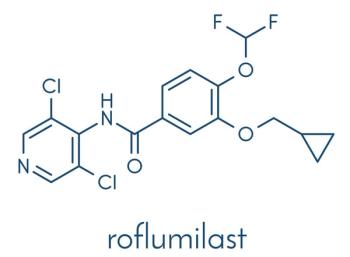
Torus Mandibularis
During a new-patient evaluation, a 49-year-old Hispanic man was found to have several nontender, hard nodules protruding from the lingual area. The nodules had evolved slowly over several years. The patient reported no trauma to the area. He was a long-time smoker and took no medications. His medical and family histories were unremarkable.
During a new-patient evaluation, a 49-year-old Hispanic man was found to have several nontender, hard nodules protruding from the lingual area. The nodules had evolved slowly over several years. The patient reported no trauma to the area. He was a long-time smoker and took no medications. His medical and family histories were unremarkable.
Head, eye, ear, nose, and throat findings were normal. Examination of the neck revealed no adenopathy. Musculoskeletal findings were normal.
The clinical diagnosis was mandibular tori. These benign exostoses develop on the lingual side of the mandible near the premolar and canine teeth. The tumors are found in up to 10% of the general population and between 50% and 90% of the Inuit population; they predominantly occur in men and are rare in children.1 The highest incidence is in the fifth decade of life.
Although the cause of torus mandibularis is unknown, genetic determinants as well as occlusal load may be contributory factors. Bruxism and masticatory stress can increase the occlusal load, especially in persons who consume a coarse diet.2 This can lead to pressure on the periodontal ligament and subsequent new bone formation on the lingual surface.3
The differential diagnosis of torus mandibularis includes abscess formation, bone cancer, salivary gland tumors, vascular tumors, and fibromas.4
Mandibular tori are generally managed by maxillofacial surgeons. Removal is typically required if the mass interferes with dental procedures (eg, crown placements) or if the growth is large enough to impede proper mastication. The mass is removed with a mallet and chisel, reciprocating saw, or bur technique, with the patient under general anesthesia. Blood loss is minimal.
This patient underwent the mallet and chisel procedure, which he tolerated well. There were no signs of regrowth.
References:
REFERENCES:
1
. Mayhall JT. The effect of cultural change upon Eskimo dentition.
Arctic Anthrop.
1970;7:117-121.
2
. Mayhall JT, Dahlberg AA, Owen DG. Torus mandibularis in an Alaskan Eskimo population.
Am J Phys Anthropol.
1970;33:57-60.
3
. Ossenberg NS. Mandibular torus. A synthesis of new and previously reported data and a discussion of its cause. In: Cybulski JS, ed.
Contributions to Physical Anthropology
, 1978-1980. Ottawa: National Museum of Canada; 1981:1-52.
4
. Pynn BR, Kurys-Kos NS, Walker DA, Mayhall JT. Tori mandibularis: a case report and review of the literature.
J Can Dent Assoc
. 1995;61:1057-1058, 1063-1066.
Newsletter
Enhance your clinical practice with the Patient Care newsletter, offering the latest evidence-based guidelines, diagnostic insights, and treatment strategies for primary care physicians.
























































































































































































































































































